
Early Blight
Early Blight
Vegetable Plant
Leaf Spot
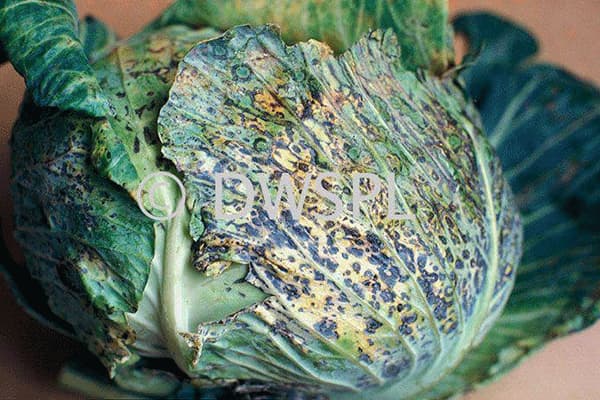
The fungus survives on crop residues. They are most damaging, when the moisture is available more than 5 hrs.
Fungus that produces leaf spot on the base of cabbage head, cauliflower initial base leaf. In cauliflower, affects the curds and shows brown rot. The spots are initially small begin on older leaves, which shows spots surrounded by yellow discoloration. During the high disease pressure, the spots coalesce and forms a blight appearance and defoliation occurs
- Spray Kavach / M-45 / Score @ 2g/lt of water.
Downy Mildew
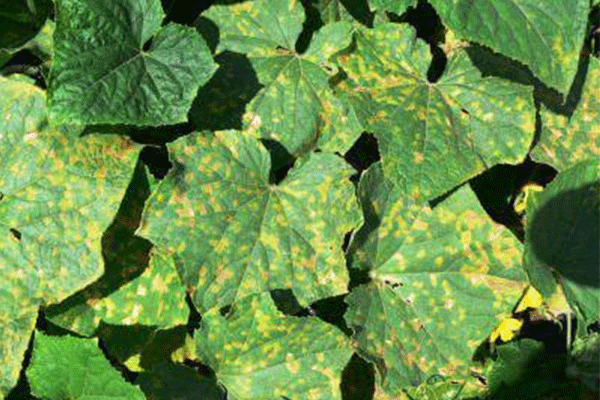
Portions of the under surfaces of infected leaves become covered with a white to grey fluffy “down” comprised of the fungus spores. The upper surfaces of the leaves have purple, yellow or brown regions that correspond to the sporutating areas on the under surfaces of the leaves. Infected young plants may die. An early leaf infection may enter a plant’s vascular system turning it black. Cauliflower curd & cabbage heads may all become unmarketable if infected.
Ridomil (1.5g/ltr. Water)
Powdery Mildew
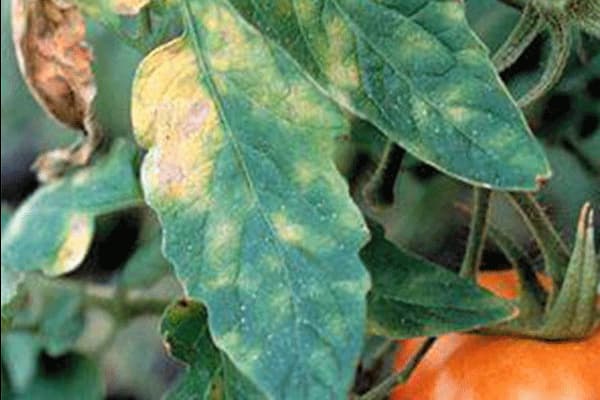
First appear on older leaves as white powdery residue primarily on the upper leaf surface. Circular patches or spots appear on the lower surface of the leaves. These gradually merge & leaf surface appears to be dusted with white powder. Infection on cabbage or cauliflower can cause reduced head or Curd size. Fruits of the affected plants do not develop fully & remain small. Leaf yellowing & finally leaves dropping occurs.
Carbendazim (1ml/ ltr. Water) Bayleton / Calixin @ 0.3g/ litre of water. Sulphur (2g/ ltr water)
Early Blight
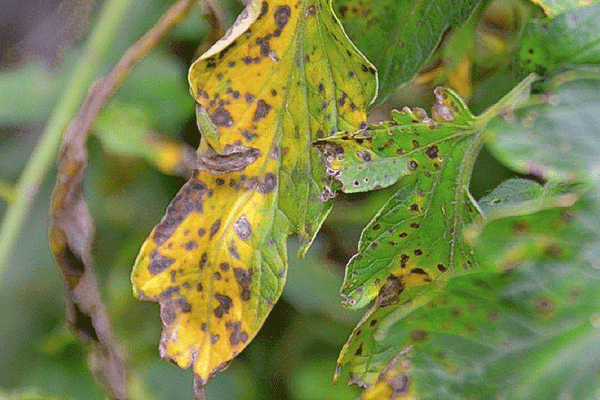
Dark brown spots with concentric rings on leaves, fruits; stem gives board effect. Fruit Becomes infected, generally through the calyx or stem attachment during green or ripe stage. Fruit lesions attain considerable size, occasionally involving the entire fruit; usually have concentric ringing; mostly drop.
High humidity, with frequent rain; a temperature (24-29 ° C) favors the disease development.
- Polyram (Metiram)- 2gm/ltr. water. Quintal (Carbendazim + Iprodione)- 2gm/ltr. Water.
- Cultivate resistant variety.
Bacterial Spot
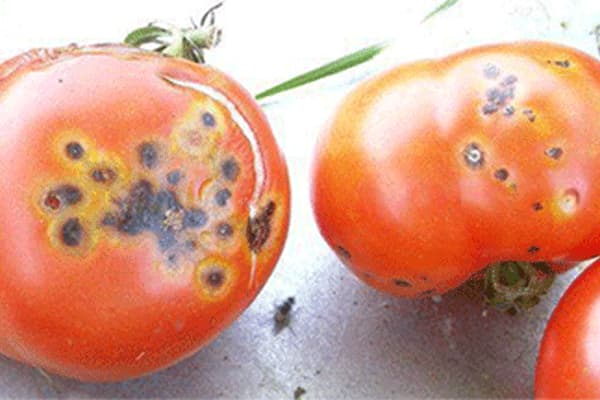
Lesions on fruit – large, black & canker like, become corky & resemble small scabs with irregular margins. Leaf Spots- Numerous small, angular to irregular, water soaked spots & have a yellow halo, centers dry out frequently tear.
- Streptocycline (6gm/10 ltr. Water) Blitox (Copper Onychloride) – (2-3gm / ltr. Water)
- Crop Rotation – Cereal & leguminous crops.
- Cultivate resistant Variety.
Fusarium Wilt

Soil borne disease. High temperature & wet soil favours the disease development. More prevalent during high soil moisture with 19-250
Plant shows partial wilting, which becomes permanent & progressive, affecting more vines. Leaf shows yellowing, loose turgidity & drooping, eventually the plant dies. Roots are not affected. In older plants, leaves wilt suddenly & internally vascular bundles in the collar region become yellow or brown.
- Soil drenching with Topsin- M (Thiophanate methyl)-(2g/ ltr. Water) Bavistin (Carbendazim)/Companion(Carbendazim+Mancozeb)-(2g/ ltr. Water) at 5-6 days interval.
Bacterial Wilt
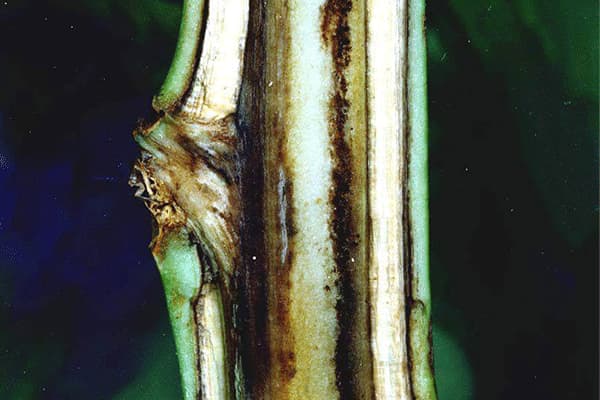
Wilting of lower leaves followed by sudden & permanent wilt of the entire plant without yellowing. Vascular browning occurs, bacterial streaming from vascular elements occurs when cross sections of the lower stem are suspended in water.
Infected potato tubers. Soil, perpetuates in soil for 2 years. Solanaceous crops are susceptible.
- Soil drenching with Streptocycline (6gm/10 ltr. Water) Blitox (Copper ony chloride)- (2-3gm/ ltr. Water)
- Cultivate resistant variety.
- Crop rotation- cereal & leguminous crops.
Tomato Leaf Curl Virus
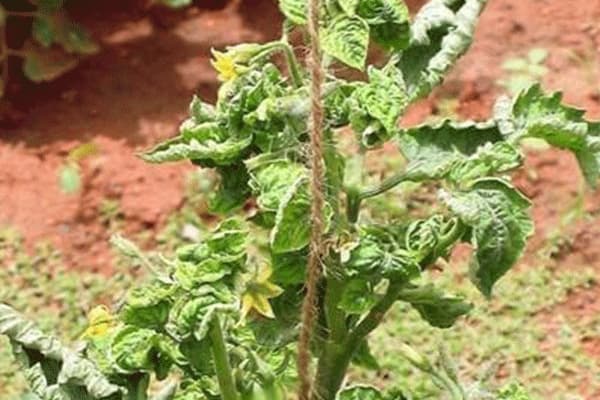
Chlorosis of leaves. Inward curling. Lateral branches increases. Complete sterility/Deformed fruits
- Confidor (Imidacloprid)-(0.25-0.5ml/Ltr. Water) Pegasus(Diafenthiuron)-(0.5-1.0gm/ ltr. Water) Actara (Thiamethoxam)-(0.25-0.5 gm/ ltr. Water) Pride (Acetamiprid)-(0.75 gm/ ltr. Water).
- Cultivate resistant Variety.
Black Rot
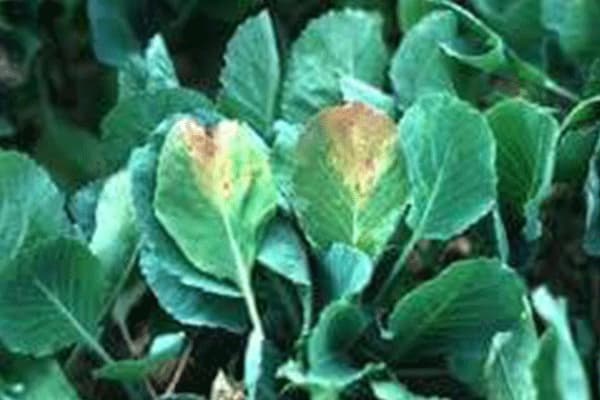
Seed borne bacterial disease & also lives in soil and crop debris. High humidity and warm climate, needs moisture during the night / morning
Yellow-orange v-shaped lesions that occur along the cotyledon and leaf margins. The yellow tissue turns to yellow-brown and the lesion progresses to a V-shaped area with the base of the V toward the leaf centre. Once the symptom advanced, entire plant shows dried leaf, under higher moisture plant rots. In cabbage, heads are smaller and lower leaves may fall off.
- Copper Oxychloride (@2g / lt water) + Streptocycline (0.5g / lt water).
Yellow Vein Mosaic Virus (YVMV)
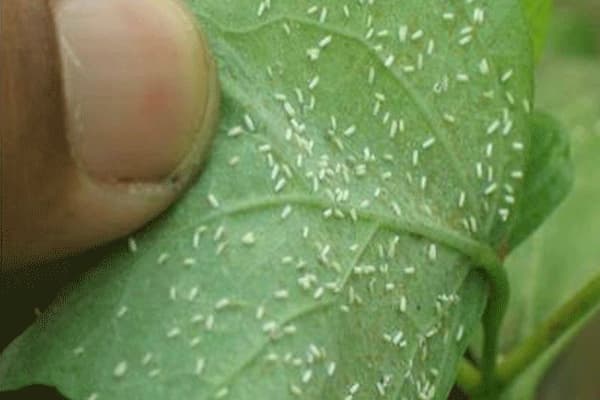
Yellow coloured veins in leaves. Leaf turns completely yellow. In extreme cases leaf become totally light yellow or cream coloured & there is no trace of green colour.
- Soil application- Carbofuran (4Kg/acre). Confidor (Imidacloprid)-(0.25-0.5ml/ ltr. Water). Pegasus (Diafenthiuron)- (0.5-1.0 gm/ltr. Water). Actara (Thiamethoxam)- (0.25-0.5 gm/ ltr. Water)
- Remove & destroy virus affected plants.
- Cultivate resistance varieties.
Enation Leaf Curl of Bhendi
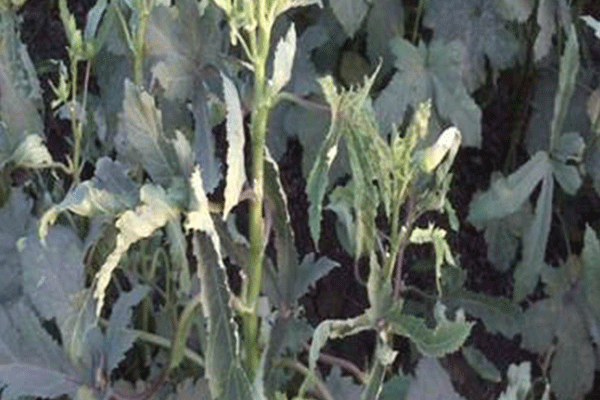
Leaf size is reduced & plants remain stunded. Twisting of main stem & lateral branches. Bending of plants appears to be creeping on the soil surface. Twisting of leaf petiole is conspicuous. Leaves become thick & leathery in structure. Severe cases new leaves also exhibit bold enactions, thickening & curling. Fruits are few with pale yellow colour deformed, small & tough in texture.
- Remove & destroy virus affected plants.
- Cultivate resistance varieties.
- Soil application- Carbofuran (4Kg/acre). Confidor (Imidacloprid)-(0.25-0.5ml/ ltr. Water). Pegasus (Diafenthiuron)- (0.5-1.0 gm/ltr. Water). Actara (Thiamethoxam)- (0.25-0.5 gm/ ltr. Water)
Blossom End Rot
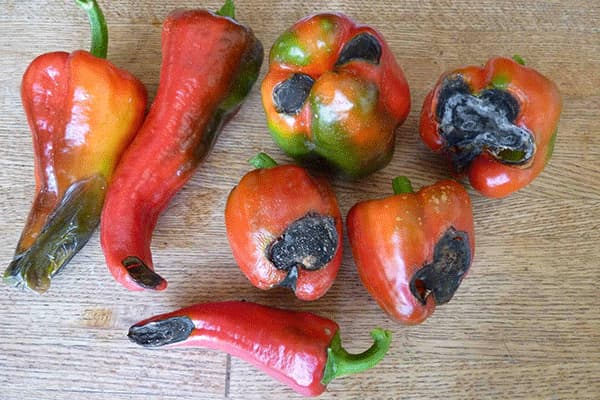
Dark coloured dry rot on the end of the fruit where the flower was. The problem is caused by a lack of calcium in the developing fruit.
Calcium Nitrate / Calcium Chloride.
Fruit Rot
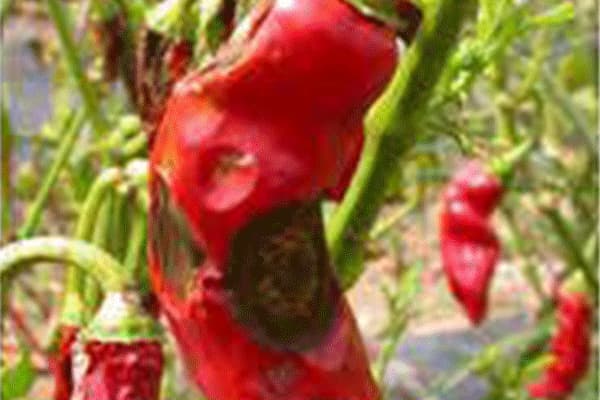
Symptom starts when the fruit starts ripening. Water soaked sunken lesions & rapidly expand. Fully expanded lesion are sunken & range from dark red to light tan coloured. Later the fruit starts rotting.
The diseases is severe when the ripening coincides with rains / during rainy season with over head irrigation. The pathogen survives in the soil & crop details.
- Good water management.
- Spray M-45 /Kavach @ 2g/ ltr water.
Fuzziness

Appearance of hairy structure on the curd is characterized by fuzziness which results from any temperature higher or lower than the optimum required for a particular cultivar or too large a temperature fluctuation during the curd development.
Pinking
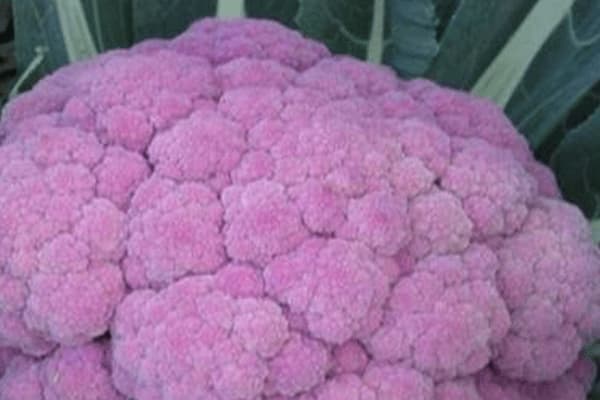
The purple colour is due to formation of anthocyanins also found in red cabbage.
Bracting
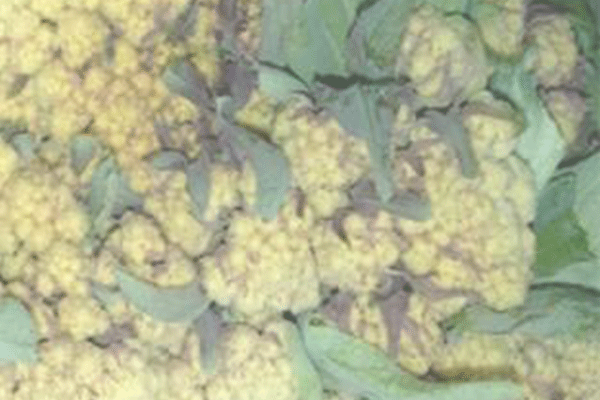
High temperatures shortly after the start of the curd formation may cause appearance of small leaves in the curd.
Riceyness
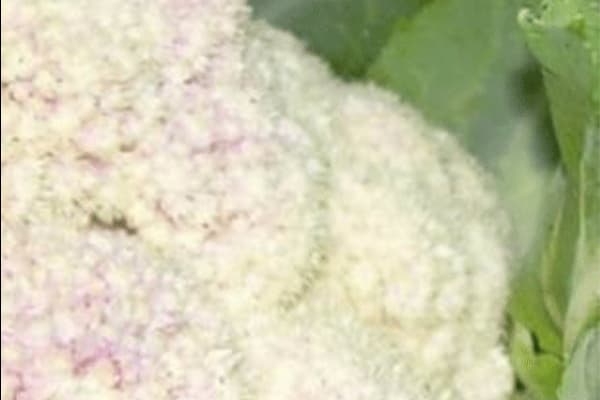
Curds to become uneven & Fuzzy. Low temperature just after planting, warm temperatures during curd development. Late supply of nitrogen to plants. Premature initiation of floral buds results from any temperature higher or lower than the optimum required or too large temperature fluctuation by irrigation during the curd development.
Peanut Bud Necrosis Virus (TOSPO/PBNV)-Thrips
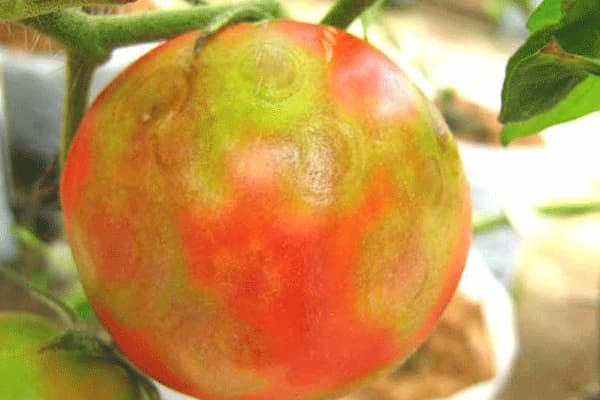
Bronze colour marking on upper leaf. Downward curling. Necrotic spots. Stiffening & upward rolling of leaves. Shoots necroses. Wilt & Die. Fruits- yellow spots with concentric bronze colour, red 7 yellow bands on ripened fruits.
Confidor (Imidacloprid)-(0.25-0.5ml/ ltr. Water). Curacron (Profenofos)- (1-1.5ml/ ltr. Water). Actara (Thiamethoxam)-(0.25-0.5gm/ ltr. Water). Pride (Acetamiprid)-(0.75gm/ ltr. Water).
Buttoning
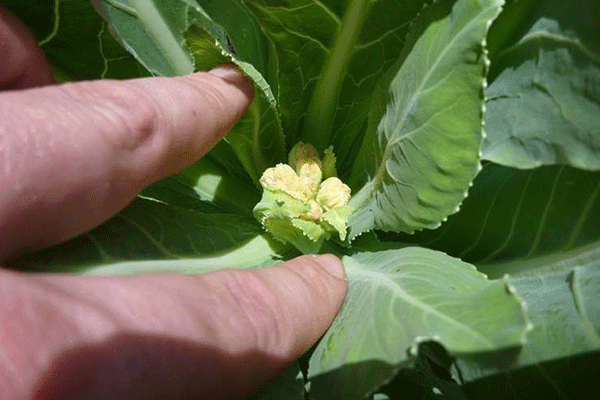
Any check in the vegetative growth of the seedling may induce buttoning. Transformation from vegetative to curding of cauliflower is dependent on temperature. Late planting of tropical early varieties causes buttoning.
Root Knot Nematode
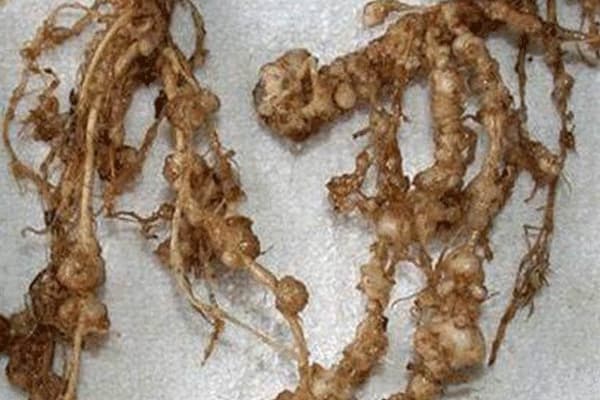
Root Knot Nematode Very active in sandy soil & having very wide host range. Survive in the soil for long period in the form of egg masses. Affected plant results in stunted growth. Wilting of the plant during hat & water stress. Form root knots & result in failure of overall plant growth.
- Deep ploughing during the hot summer.
- Application of Neem Cake.
- Soil Fumigation.
Mites
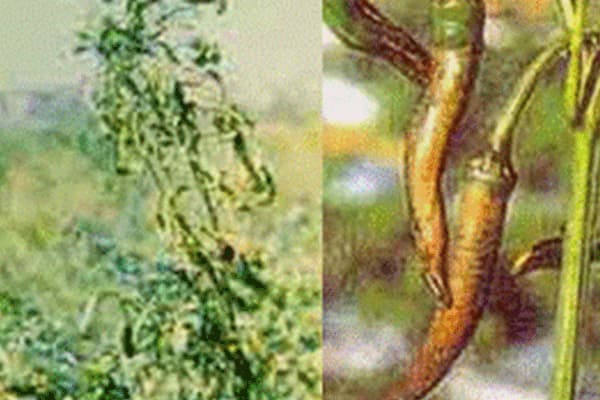
These are found in large numbers in the ventral side of the leaves under the protective cover of the web. Both nymphs suck the sap & devitalize the plants causing murda complex. In severe cases infested fruits become brownish & hard skin.
Spray miticides Ethion/ Dicofol/ Wettable sulphur or Vertemac @ 2ml/ ltr water.
Red Mites
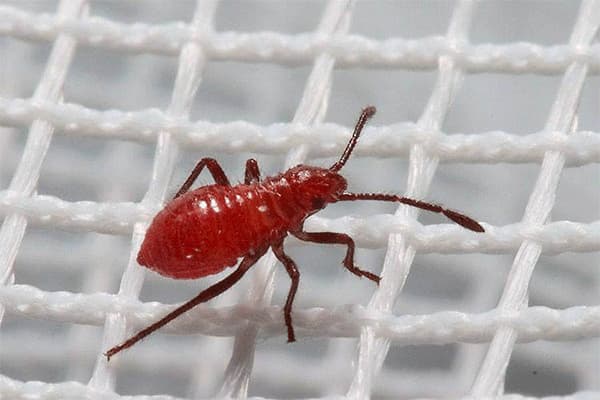
Colonies of mites are found feeding on the ventral surface of leaves under fine silken web protective cover. The affected leaves turn yellow & curl & gradually crumpled. During severe infestation the fruits & entire plant affected. Warm temperature favors higher multiplication.
Sulphur @ 2ml/ ltr. Water. Vertemac @ 2ml/ ltr. Water. Confidor/ Actara @ 1ml / ltr. Water.
Leaf Miner
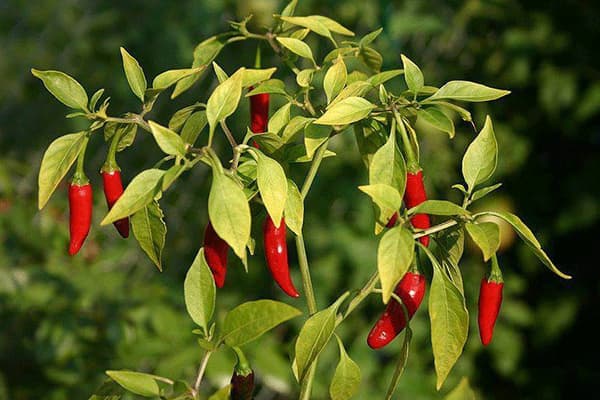
Nature of Damage
Attack on leaf upper surface & photosynthesis get affected & hence the yield.
Control
Vertimac @ 2ml/ ltr. Water..
Aphids
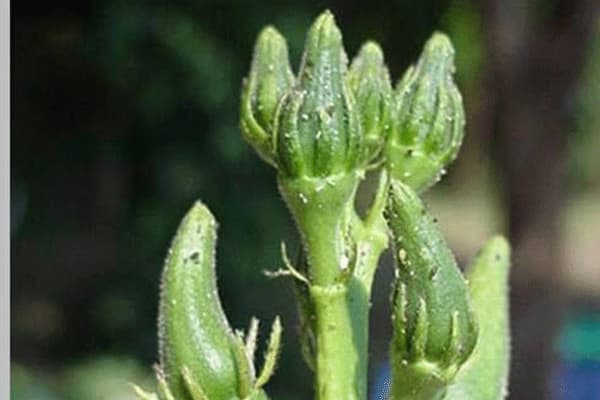
The nymphs & adults suck the sap from the leaves & from the tender young growing fruit tips. The affected leaves would have honey, which attract sooty molds
Confidor / Actara/ Acephate/ Pride @ 1ml/ ltr. Water
Thrips
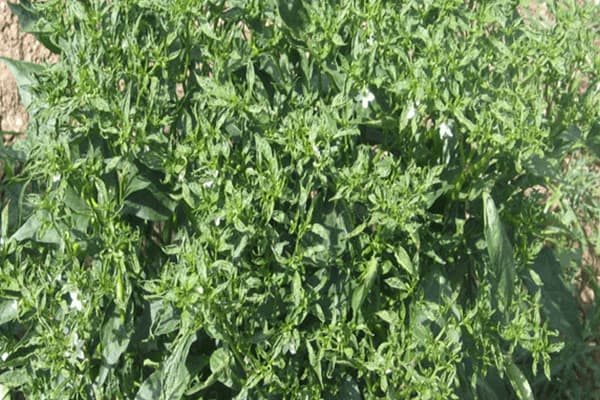
Both adult & nymphs lacerates the tissue & feed on the young leaves,becomeupword curled & brittle. Fruits would show scars. Transmit Tospovirus.
Spray systemic insecticides: Confidor @1ml /ltr. Water. Actara @ 1gm /ltr. Water. Nuvacron @ 2ml/ ltr. Water
Diamond Black Moth
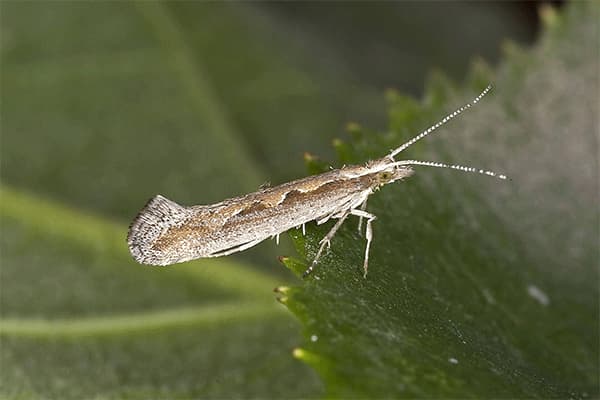
On hatching, young larvae feed by scraping epidermal leaf tissue producing white membranous patches. Advance stage larvae bite the leaves & makes small holes. In severe condition, leaf completely damages with holes.
Spray success @ 0.5ml/ ltr or Avaunt @ 1ml/ ltr.
Pod Borer
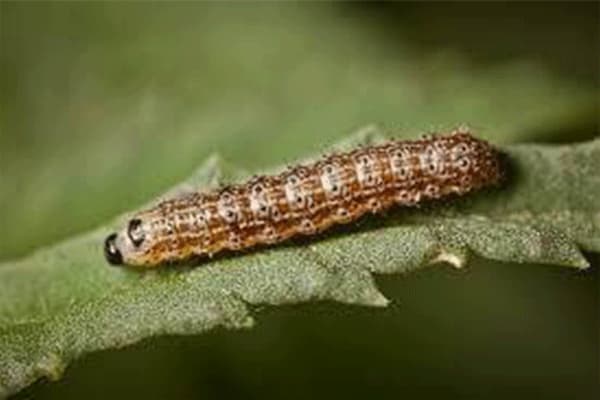
Larvae feed on the leaves making holes in the lamina. Caterpillars also feed on the seeds by making irregular holes in the pods. These are nocturnal in habit & remain hidden in the soil or in the leaf canopy in the day.
Cartap Hydrochloride (Caldan/Padan) @ 2gm/ ltr. Water.
Fruit Borer
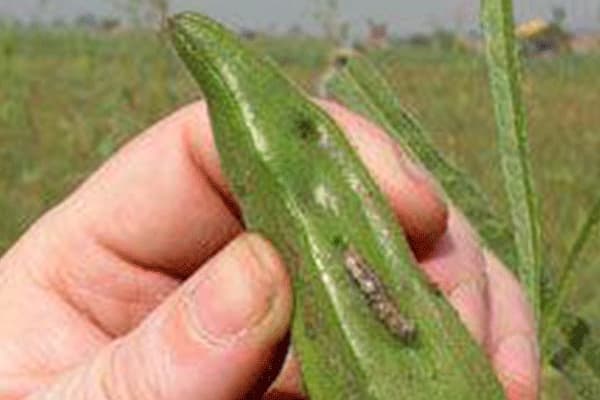
The insect lay the egg singly on fruits, flowers & shoots. The newly emerged larvae tender fruits & shoots. Affected shoots wither & droops drown. With the formation of flower & fruits, the larvae bores in to the tender plant parts & damages the internal fruits & affects the fruit quality.
Cartap Hydrochloride (Caldan/ Padan) @ 2gm/ ltr. Water.
defoliator
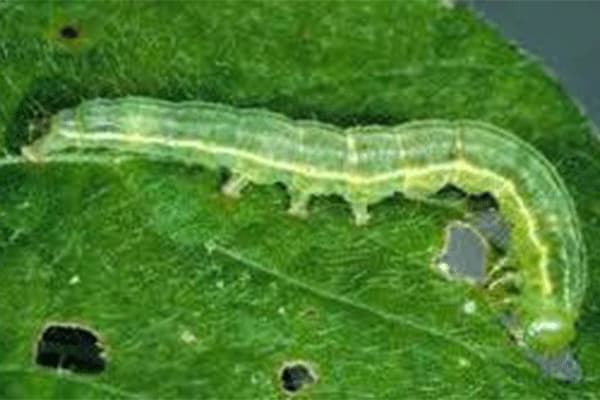
The newly emerged larvae feeds on tender leaves & during later instar the larvae feeds on older leaves. The insect defoliates the leaves.
Metasystox/ Rogor/ Proclaim (2ml/ ltr. Water) Cartaphydrochloride (Caldan/ Padan) @ 2gm/ ltr. Water.
Paddy Plant
False Smut (FS)
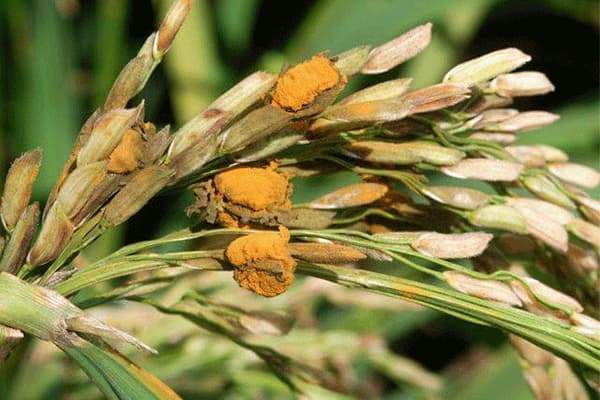
Panicle initiation.
Greenish spore balls are visible between the glumes.
Copper Oxychloride (3g/ltr. Water)
Bacterial Leaf Blight (BLB)
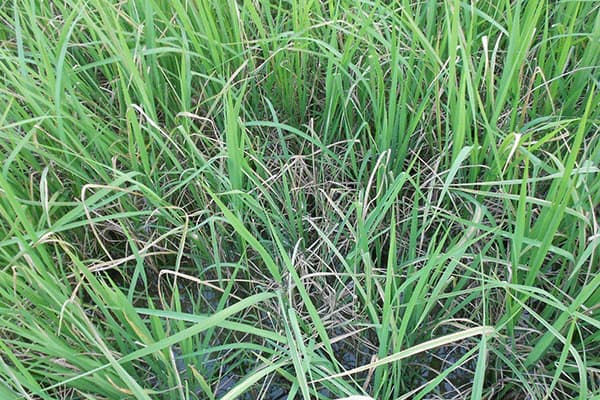
Tillering to panicle initiation.
Leaf – lessions run along of the leaf.
Steptocyclin (100 mg/ltr. Water) + Bavistin (1g/ltr. Water)
Bacterial Leaf Streak
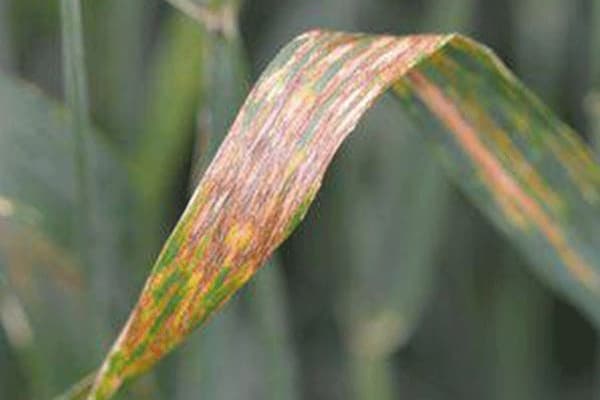
Tillering to panicle initiation.
Leaves – water soaked streaks running along the length of the leaf turn yellow to orange.
Steptocyclin (0.5 mg/ltr. Water) + Bavistin (1g/ltr. Water)
Sheath Blight
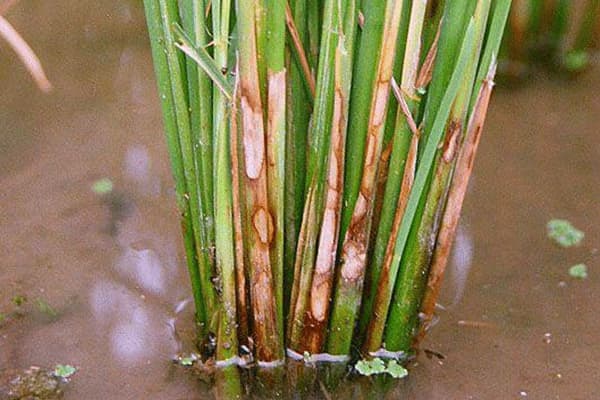
Tillering to panicle initiation.
Greyish green lesion between the water and the leaf blade.
Blast
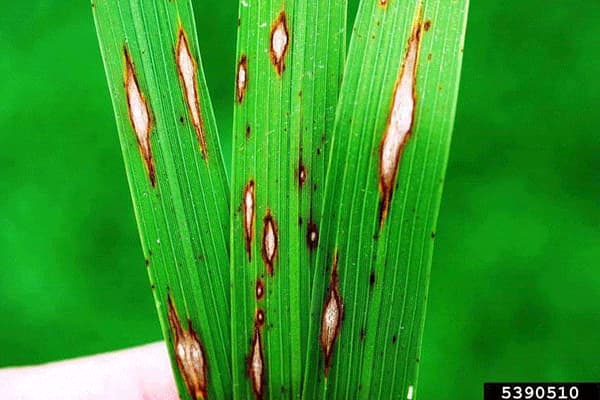
Seedling to panicle initiation.
Grey centers large in the middle tapering to ends (Eye spot). Attacks in nodes on stem Panicle attack (neck rot).
Tungro
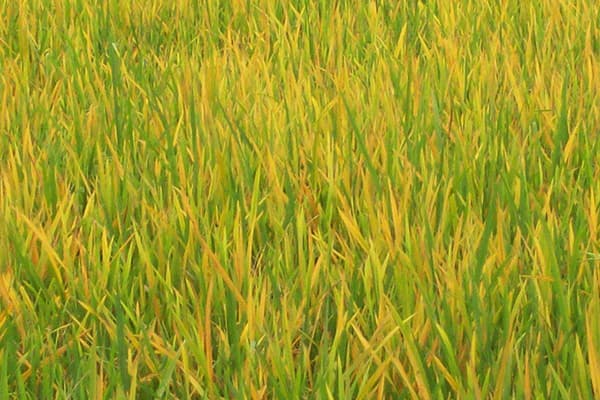
Metasystox (1.5-2 or ml/ltr. Water)
Seeding to tillering.
Molted young leaves. Older leaves are yellow to orange yellow. Stunted with slight reduction in tiller number.
Metasystox (1.5-2 or ml/ltr. Water)
Green Leaf Hopper
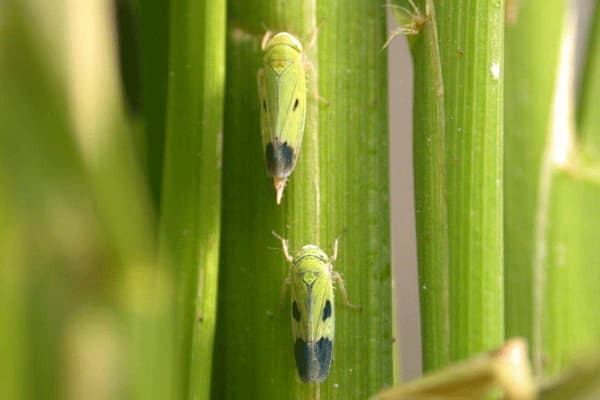
Significance
Primarily a problem in the spread of Tungro disease.
Growth stages when a problem
Seeding to panicle initation (1-4)
Damage symptoms
Tungro (plants virus) causes stunting, reduced tillering, leaves light yellow.
IPM levels
5 per hill Life cycle: 23-30 days.
Mechanism of damage
Virus spread or direct sucking
Control
Control generally not required (Required in Tungro-prone area) Cypermethrin(USTAAD 10% EC 1 Lt/Ha)
Whorl Maggot
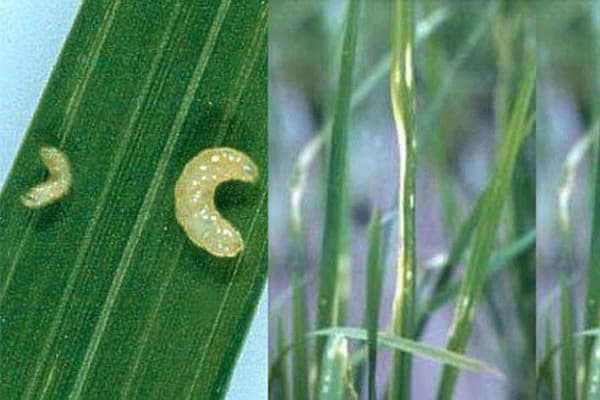
Growth stages when a problem
Seeding to tilling.
Damage symptoms
Distortion and whitening/yellowing of margins of young leaves
IMP levels
Not considered a problem at most levels of damage)
Life cycle
4 weeks (approximately)
Significance
Rarelyan economic problem; widespread; Incidence greater in wet season
Appearance
Translucent larvae found within early rice tillers.
Mechanism of damage
Rasp growing point and margins of developing leaves
Comments
Prevention is only recommended – when damage is visible, the pest has already left the crop.
Damage symptoms
Distortion and whitening/yellowing of margins of young leaves
IMP levels
Not considered a problem at most levels of damage
Leaf Folder
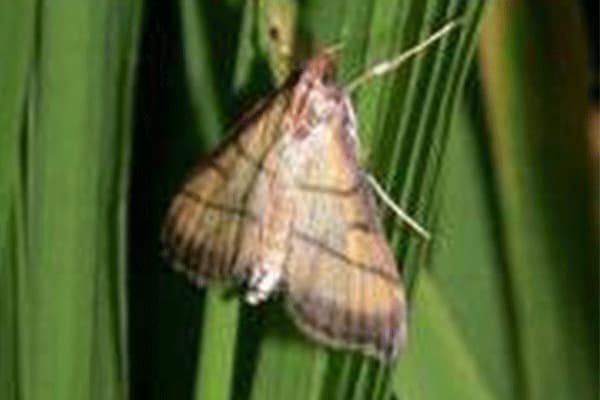
Infestation stage
Tillering Stage.
Symptoms
Inward curling of upper leaf surface. Suck the chlorophyll content of leaf surface and gives whitish appearance.
Control Measures
Chlorpyriphos + Cypermethrin (2ml/ltr. Water)
Rice Bug
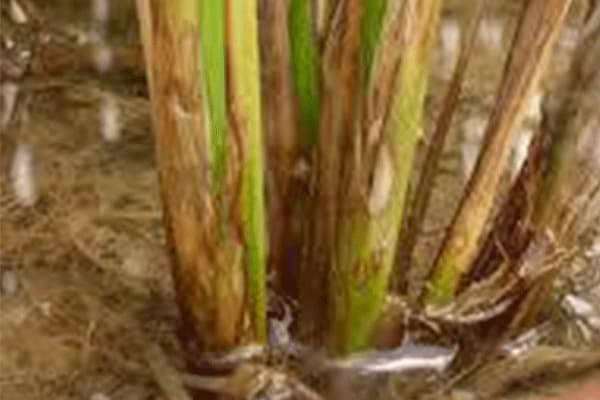
Stage
Milky grain stage
Symptoms
Withered and discoloured
Control Measures
Chlorpyriphos (2ml/ltr. Water)
Brown Plant Hopper
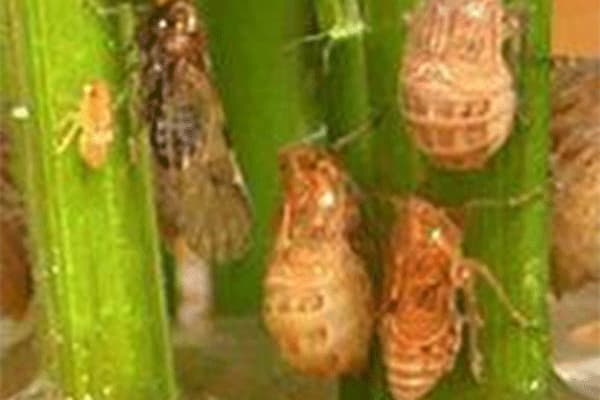
Tillering to milk stage.
Lodging of mature plants.Control Measures: Imidachloprid (0.5 ml/ltr Water)Acephate (2-2.5 g/ltr Wat
- Premature yellowing of leaves leading to drying.Drying of plants occurs in isolated circular patches causing hopper burn.
- Lodging of mature plants.Control Measures: Imidachloprid (0.5 ml/ltr Water)Acephate (2-2.5 g/ltr Water)
Stem Borer
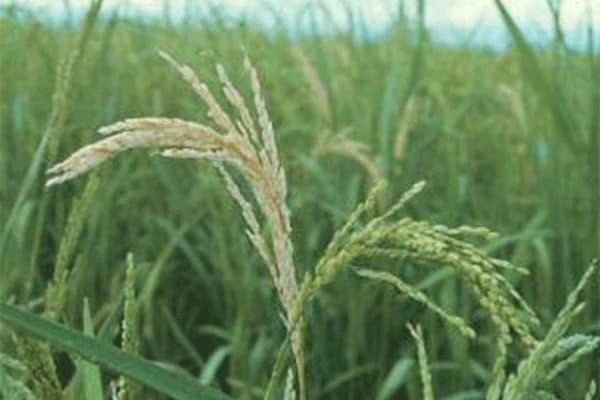
Seeding to panicle initiation.
Dead heart (Stunted or dead tillers); Whitehead (Unfilled panicle).
Fatera (4kg/acre) Carbafuron (Furodon) @ 12 kg/acre Chlorphyriphos + Cypermethrin (2ml/ltr. Water) Lamdacylothrin (2ml/ltr. Water) Cartap Hydrochloride (2ml/ltr. Water)
Essential plant Nutrients & their Functions
Zinc (Zn)
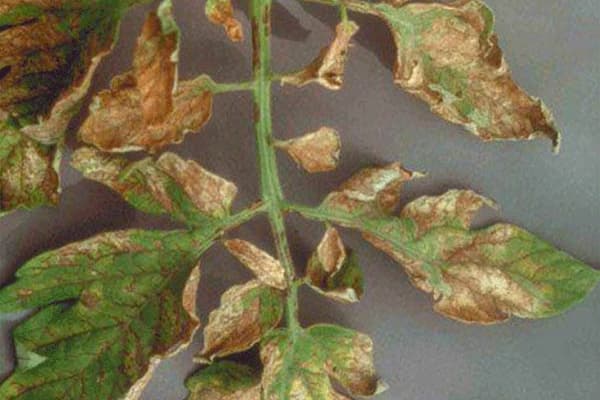
Zinc (Zn) is taken up by plants as the zinc ion (Zn2+ ) & is essential constituent of several important enzyme systems in plants. It controls the synthesis of indoleacetic acids, an important plant growth regulator. Terminal growth areas are affected first when zinc is deficient. Deficiency is most common on soils with neutral or alkaline pH that are sandy or have low organic matter content (including cut areas) & are very high in available phosphorus.
- Decrease in stem length.
- rosetteing of terminal leaves.
- Reduced fruit bud formation.
- Mottled young leaves (interveinal Chlorosis).
- Dieback of twigs after first year.
Sulphur(S)
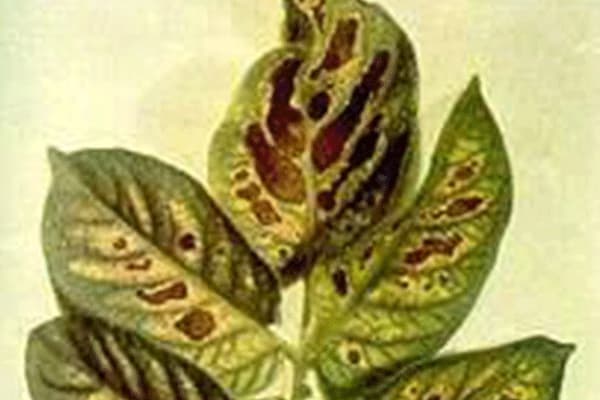
Sulphur(S) is utilised in the form of sulphate ions(SO42-). Sulphur may also be absorbed as sulphur dioxide (SO2) From the air through leaves in areas where the atmosphere has been enriched with sulphur compounds. It is not readily available from wettable sulphur which is in the form of elemental sulphur. Sulphur is a constituent of three amino acids (cystine, methionine & cysteine) & is therefore necessary for protein synthesis. It is essential for nodule formation on legume roots. Sulphur is present in oil compounds responsible for the characteristic odors of plants such as garlic and onion.
Retarded growth rate & delayed marurity.Young leaves light green to yellowish colour. In some plants, older tissue may be affected also Small & spindly plants.
Potassium (K)
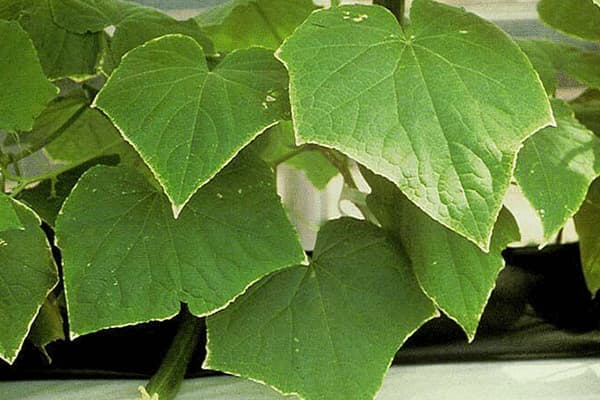
Potassium (K)
Potassium (K) Potassium (K) is taken up by plants in the form of potassium ions(K+). It remains in ionic form within cells & tissues. Potassium is essential for translocation of sugars & for formation of Starch. It is required in the opening & closing of Stomata by guard sells. Potassium promotes root growth; produces larger, more uniformly distributed xylem vessels through the root system; & increases plant resistance to disease. Potassium increases size & quality of fruits, nuts & vegetables & improves winter hardiness of perennials. Plantsthat produce large amounts of carbohydrates have a high potassium requirements.
Symptoms of K Deficiency
- Slow growth.
- Tip & marginal chlorosis..
- Weak stems & Stalks.
Remedy
- Apply potassium Fertilizer.
Phosphorous(P)
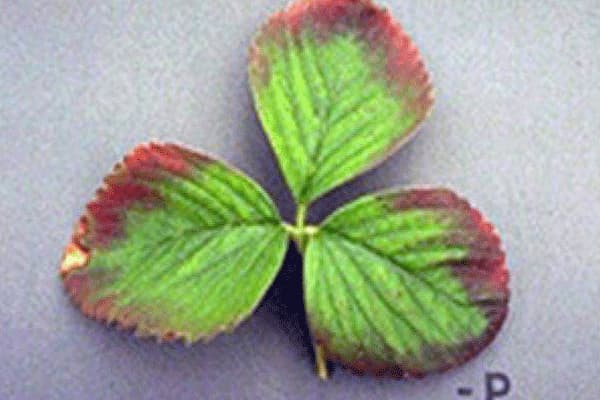
Phosphorous (P)
Phosphorous(P) Phosphorous(P) is taken up by plants as ortho-phosphate PO42- .Phosphorous is present in all living cells. It is utilized by the plant to form nucleic acids (DNA & RNA). Through energy-rich linkages (ATP & ADP), it is involved in the storage & transfer of chemical energy used for growth & reproduction. Phosphorous stimulates seedling development & root formation. It hastens matuarity& promotes seed production.
Phosphorous supplementation is required most by plants under the following circumstances
- Cold water
- Limited root growth period & rapid vegetative growth.
Symptoms of P Deficiency
- Slow growth; stunted plants.
- Purplish coloration on foliage of some plants (Older leaves first).
- Dark green coloration.
- Delayed maturity.
- Poor fruit or seed development.
Nitrogen(N)
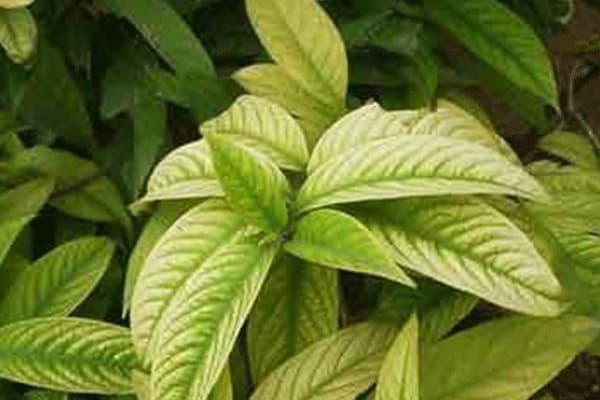
Nitrogen (N)
Nitrogen(N) Nitrogen(N) is taken up by plants nitrate (NO3-) or ammonium (NH4+) ions. It is utilized by plants to synthesize amino acids, the building blocks of proteins. The protoplasm of all living cells contains protein. Nitrogen is also required by plants for other vital compounds, such as chlorophyll, nucleic acids & enzymes. Chlorosis is usually more pronounced in older tissue. Since nitrogen is mobile within plants, it tends to move from older to younger tissue when in short supply.
Symptoms of N Deficiency
- Slow growth; stunted plants.
- Yellow-Green colour (Chlorosis).
- Death(necrosis) of tips & margins of leaves, beginning with more mature leaves.
Remedy
- Apply Nitrogenous Fertiliser
Molybdenum
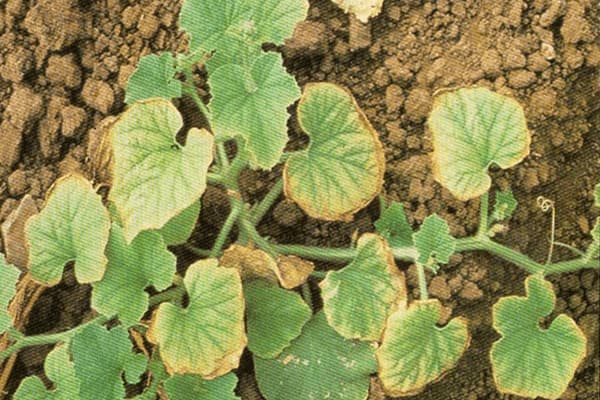
Molybdenum (Mo)
Molybdenum (Mo) Molybdenum (Mo) is taken up by plants as the molybdateion(MoO42-). It is required by plants for the utilization of nitrogen. Nitrate nitrogen is converted to amino acids by the nitrate reductase enzyme; this enzyme requires molybdenum. In addition, molybdenum is required for the symbiotic fixation of Nitrogen by legumes.
Symptoms of Mo Deficiency
- Stunting & lack of vigor.
- This is similar to nitrogen deficiency, because of the key role of molybdenum in nitrogen utilization.
- Poor pigmentation.
- Marginal scorching & cupping or rolling of leaves.
- “Whiptail” of Cauliflower.
- Yellow spotting of Citrus.
Manganese (Mn)
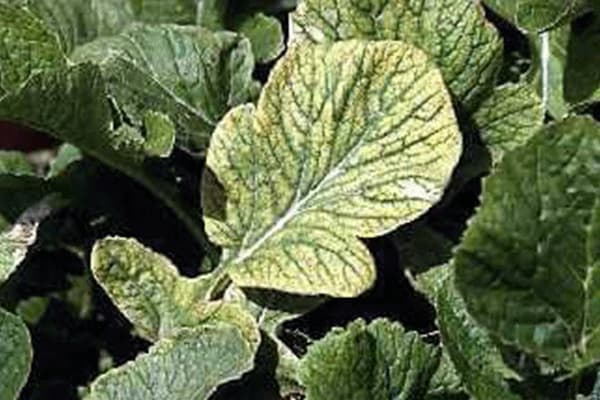
Manganese (Mn) Manganese (Mn) uptake is in the form of the ion Mn+2. Manganese serves as an activator for enzymes in plant growth processes. It assists iron in chlorophyll formation. High concentrations of manganese in plants may induce iron deficiency. Manganese is generally required with Zinc in foliar spraying of Commercial citrus. Other tree crops may show deficiencies.
Interveinalchlorosis of young leaves. Gradation of pale-green leaf coloration, with darker color next to veins. No sharp colour distinction between veins & inter veinal areas as with iron deficiency.
Magnesium

Magnesium (Mg)
Magnesium Plant uptake of Magnesium is in the form of the magnesium ion (Mg2+). The chlorophyll molecule, which is essential for photosynthesis, contains magnesium. Magnesium serves as an activator of many plant enzymes required in growth processes. Magnesium is mobile within plants & can be readily translocate from older to younger tissue when it is deficient. Plants need magnesium to balance the generally high use of potassium from fertiliser & manure.
Symptoms of Mg Deficiency
InterveinalChlorosis in older leaves. Curling of leaves upword along margins. Marginal yellowing, with green “ Christmas Tree” area along mid-rib of leaf.
Iron (Fe)

Iron (Fe) Iron (Fe) is taken up by plants as ferrus ions (Fe2+) & is required for the formation of chlorophyll in plant cells. It serves as an activator for biochemical processes, such as respiration, photosynthesis & symbiotic nitrogen fixation. Iron deficiency can be induced by high levels of manganese or high lime content in soils. Deficiencies are common in high pH soils, in situations with poor aeration, or when high levels of Zinc or Managanese are present.
Interveinalchlorosis of young leaves. Veins remain green except in severe cases. Twig dieback. In severe cases, death of entire limbs or Plants.
Copper
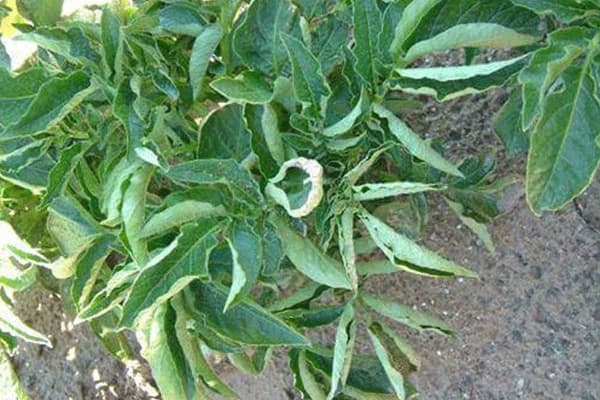
Symptoms
Calsium (Ca) Calsium (Ca) is taken up by plants as the calcium ion (Ca++). A structural nutrient, it is an essential part in cell walls & membranes & is required for the formation of new cells. For this reason, early season availability of supplemental Calcium has a distinct effect on fruit set. Once deposited in plant tissues, Calcium is not remobilized. Therefore, young tissue is affected first under conditions of deficiency. Since Calcium is not mobile, the requirements of a crop for Ca++ after early fruit set are commonly supplied in the form of nutritional sprays.
Symptoms of K Deficiency
- “Tip burn” of young leaves-celery, lettuce, Cabbge.
- Death of growing points (Terminal buds). Root tips also affected.
- Abnormal dark green appearance of foliage.
- Premature shedding of blossoms & buds.
- Weakened stems.
- Water-soaked, discoloured areas on fruit-blossom-end rot of tomatoes, peppers & melons; bitter pit or cork spot of apples & pears..
Symptoms of Cu Deficiency
- Stunted growth. Dieback of terminal shoots in trees. Poor pigmentation.
- Dieback of terminal shoots in trees.
- Poor pigmentation.
- Wilting & eventual death of leaf tips.
- Abnormal dark green appearance of foliage.
- Premature shedding of blossoms & buds.
Calsium (Ca)

Symptoms
Calsium (Ca) Calsium (Ca) is taken up by plants as the calcium ion (Ca++). A structural nutrient, it is an essential part in cell walls & membranes & is required for the formation of new cells. For this reason, early season availability of supplemental Calcium has a distinct effect on fruit set. Once deposited in plant tissues, Calcium is not remobilized. Therefore, young tissue is affected first under conditions of deficiency. Since Calcium is not mobile, the requirements of a crop for Ca++ after early fruit set are commonly supplied in the form of nutritional sprays.
Symptoms of K Deficiency
- “Tip burn” of young leaves-celery, lettuce, Cabbge.
- Death of growing points (Terminal buds). Root tips also affected.
- Abnormal dark green appearance of foliage.
- Premature shedding of blossoms & buds.
- Weakened stems.
- Water-soaked, discoloured areas on fruit-blossom-end rot of tomatoes, peppers & melons; bitter pit or cork spot of apples & pears..
Boron(B)
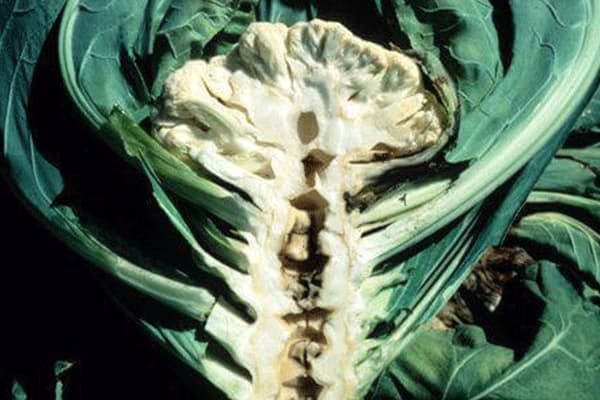
Symptoms
Boron(B) is predominately in solution as boric acid, H3BO3, and is taken up by plants in this form.It functions in the differentiation of meristematic of meristematic cells. Boron is also involved in regulating metabolism of carbohydrates in plants. Nearly all fruiting crops have a high demand for boron in the early fruiting stage. Foliar applications are an effective way to meet this demand at this critical growth state. Recent research has shown that boron is effective in increasing pollen viability, thus controlling to increased fruit set. When boron is deficient, cells may continue to divide, but structural components are not differentiated.
Symptoms of B Deficiency
- Death of terminal growth, causing lateral buds to develop, producing a “witch’s broom” effect.
- Thickened, curled, wilted &chlorotic leaves.
- Soft or necrotic spots in fruit or tubers.
- Reduced flowering or improper pollination
